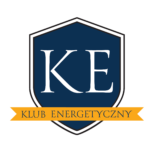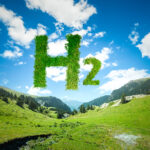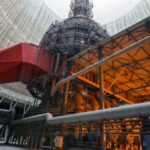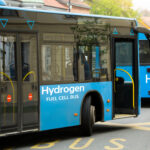The ‘Nuclear Energy Value Chain in Poland’ Conference, held on 26 January 2023, began with the presentation of a report of the same title. On this occasion, a lecture was given by Prof. Grzegorz Tchorek of the Institute of Power Engineering and the Faculty of Management at the University of Warsaw.
We are talking about a multi-generational investment. Taking into account the [nuclear] waste storage time, nuclear power is a project designed for a period of up to 200 years. We have a long way to go, as we are still in the design stage. This is why we should speak of a supplier chain rather than a value chain. On average, a [nuclear] power plant takes 7-9 years to build and 60-100 years to operate. Then there are additional decades for the decommissioning process.
Grzegorz Tchorek, Institute of Power Engineering, Faculty of Management, University of Warsaw
The important role of nuclear power in Europe
According to Prof. Tchorek, the current energy crisis and the war in Ukraine have changed attitudes towards fossil fuels in Europe. And despite a short-term increase in coal consumption, it is more likely that the period of natural gas in the electricity sector will be shortened. Climate policy and the accelerated transition away from carbon-intensive resources represent an opportunity for nuclear power in the European Union and worldwide.
A key advantage of nuclear power is its lowest level of CO2 emissions among all power generation technologies. Its disadvantages include high costs and development time.
Grzegorz Tchorek, Institute of Power Engineering, Faculty of Management, University of Warsaw
Poland does not use nuclear power. However, nuclear plays an important role in the European Union. One in four megawatt hours is generated by nuclear power plants. Globally there has been a 40% increase over the last three decades (between 1990 and 2020).
A divisive approach to nuclear projects is still visible in the EU. Nuclear power’s future in the electricity industry in the context of climate policy is also not a foregone conclusion. In addition to ‘staunch opponents’ like Austria, Luxembourg and Germany, there are countries where nuclear power is of great importance. France has the largest share of nuclear [in its energy mix – at above 60%]. In Slovakia, nuclear power has a 52% share, and in Czechia – 37%.
Our neighbours already have access to this stable energy source, and in Poland it could have as much as a 38% share in the country's energy mix, provided that both large power plants and SMRs are built.
Grzegorz Tchorek, Institute of Power Engineering, Faculty of Management, University of Warsaw
Due to the highest availability (97%) of nuclear power plants compared to other technologies, they will be able to play a stabilising role for renewables in Poland in the future.
The main challenges of nuclear power
The report identifies three challenges that will determine the success of both the first project and the nuclear programme as a whole. The first is proper project preparation. This will affect the time required to complete the power plant on schedule. Another challenge is the application of an optimal funding model.
In Prof. Tchorek’s view, “the absolute amount to be allocated is large”, but it can be spent in such a way that it brings the greatest benefit to the economy.
Construction time is one of the main concerns. Initial assumptions are usually ambitious, but then the nuclear power plant's construction time is often doubled.
Grzegorz Tchorek, Institute of Power Engineering, Faculty of Management, University of Warsaw
According to the expert, it all depends on adequate preparation, but also on how efficiently we can build the certification system for companies, to guarantee ensure stability and quality of components for many years.
Nuclear fuel is a strategic issue
The report also devotes a lot of space to the issue of nuclear fuel supply for power plants. “It is often said that fuel is not a concern as it is the technology supplier’s responsibility, but given the strategic importance of this factor, we should aim to control the nuclear fuel supply cycle,” said Grzegorz Tchorek. “If we turn our back on the Russian supplier and there is growing demand globally, it will be a resource in high demand.
It is often said that fuel is not a concern as it is the technology supplier's responsibility. However, given the strategic importance of this factor, we should aim to control the nuclear fuel supply cycle. If we turn our back on the Russian supplier and there is growing demand globally, this resource will be in high demand.
Grzegorz Tchorek, Institute of Power Engineering, Faculty of Management, University of Warsaw
The largest producers of uranium are Kazakhstan, Canada and Australia; the latter controls the largest deposits, accounting for 28% of global reserves.
According to the expert, if Polish companies were given the opportunity to own shares in the [uranium ore] deposits, ‘this would be an advantage in the investment process’.
Large nuclear units and SMRs planned
Discussing the funding models presented in the report, Prof. Tchorek pointed out the importance of ‘following the schedule’, as any delays will be very costly. The report also presents the possibilities and scale of nuclear power development in Poland based on several scenarios. The baseline scenario for Poland stems from government documents, namely Poland’s Energy Policy, which is due to be updated soon, and the Polish Nuclear Power Programme.
We assume the so-called large- and small-scale nuclear to be developed in parallel; i.e. a government project and one implemented by a private investor, i.e. ZE PAK in cooperation with Polska Grupa Energetyczna [PGE] and the Korean company KHNP, and that the SMR technology will be gradually commercialised.
Grzegorz Tchorek, Institute of Power Engineering, Faculty of Management, University of Warsaw
According to the report, the first three large reactors in Poland could be put into operation in just 12 years from now – two as part of the government project based on US technology, and one planned by ZE PAK and PGE with their Korean partner. In total, the country’s operating nuclear power plants in 2035 could have a capacity of 3.6 GW.
Five years later, the capacity will increase to 7.1-7.65 GW with three more new reactors, while in 2045 there could already be nine large reactors in our country (a total of 10.65 to 12.3 GW), the report states.
For small-scale power plants (SMRs), the commissioning of the first two projects is also possible – according to the report – in 2035, with a total capacity of 765 MW. In 2040, the capacity of SMRs will double, [ultimately] reaching 2,124 MW in 2045 with six such projects completed. It was assumed that reactors planned by PKN Orlen in cooperation with GE Hitachi, i.e. the BWRX 300 type, and smaller modular reactors by NuScale and KGHM ‘Polska Miedź’, i.e. the so-called ‘six-packs’ (462 MW of power), would be built.
The nuclear power value chain
Referring to the report’s section on ‘building the supply chain and local added value’, Prof. Tchorek pointed primarily to the need for a precisely defined investment schedule. It is also necessary to develop a catalogue of technical and certification requirements for companies.
We are only just looking at what Polish companies could supply in addition to the nuclear island.
Grzegorz Tchorek, Institute of Power Engineering, Faculty of Management, University of Warsaw
It turned out that of the 17 Polish companies that took part in the survey, only four were certified and accredited to participate in nuclear projects.
The study points to the need for “in-depth training for companies from various industries and with different products”. Nevertheless, it is important to create official guidelines and instructions for applying to technology providers. There is also a need for a single “substantive contact centre for companies and research institutions”.








